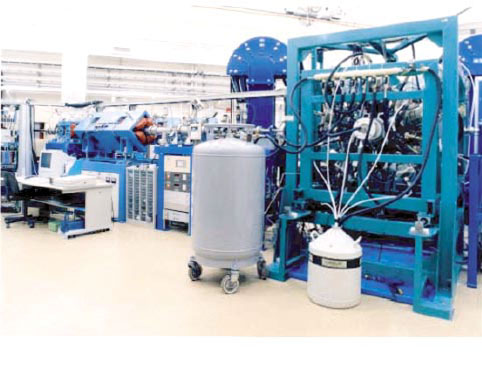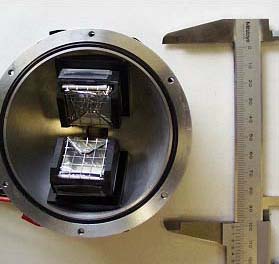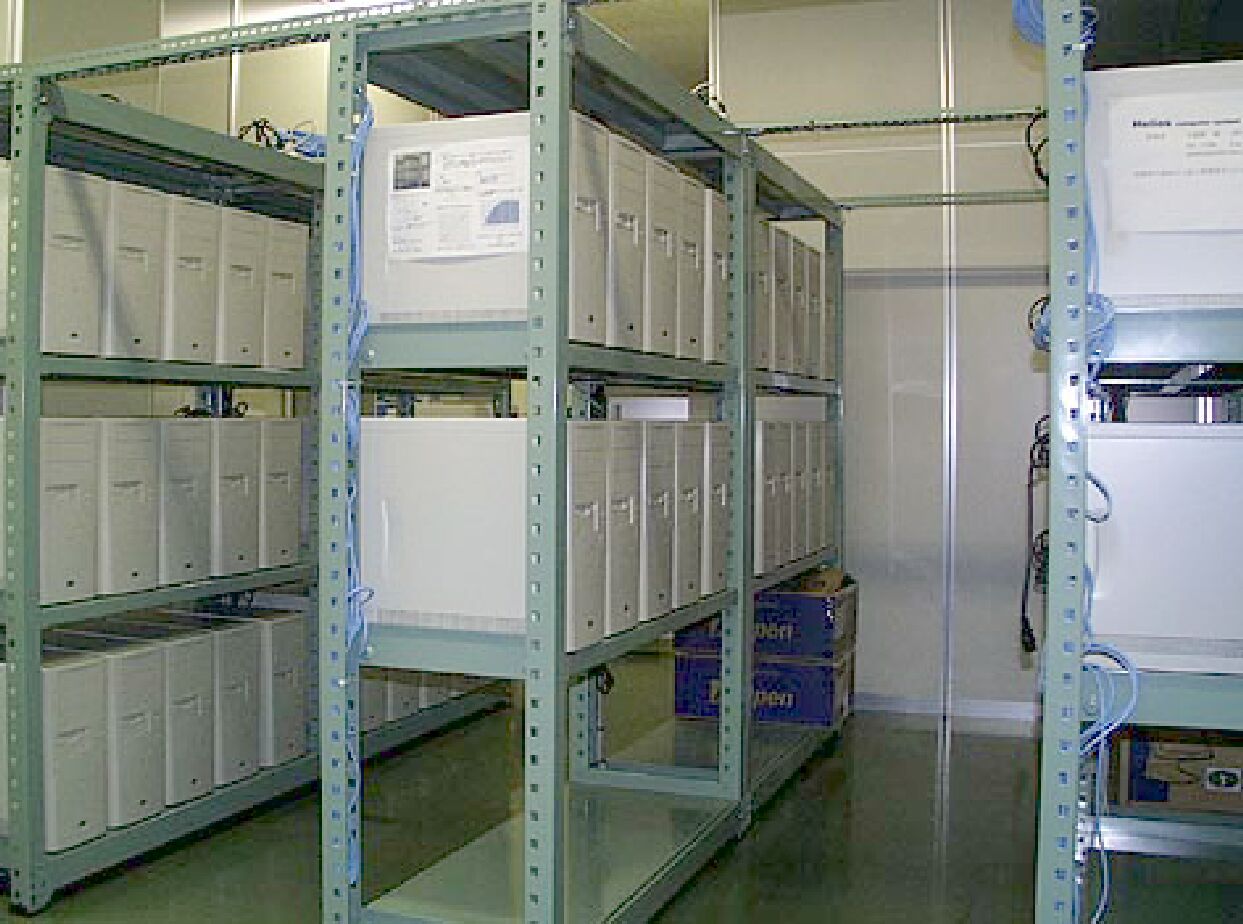Laser spectroscopic techniques are applied to measure properties of unstable nuclei, such as nuclear spin, charge radius, and nuclear moments. Laser techniques that we are using and developing are, for example, laser induced fluorescence, laser ablation, laser photoionization, and Dynamic NucleAr Self-Polarization (DYNASP).
Facilities
Multiple Gamma-Ray Detector Array, GEMINIMultiple Gamma-Ray Detector Array, GEMINI-II, consisits of 16 Ge detectors coverd with BGO anti-Compton shields and 3 LOAX detectors.GEMNI was started with 12 Ge detectors and upgraded in 2002. Experiments on nuclear structure study of low-lying states and high-spin states are carried out.

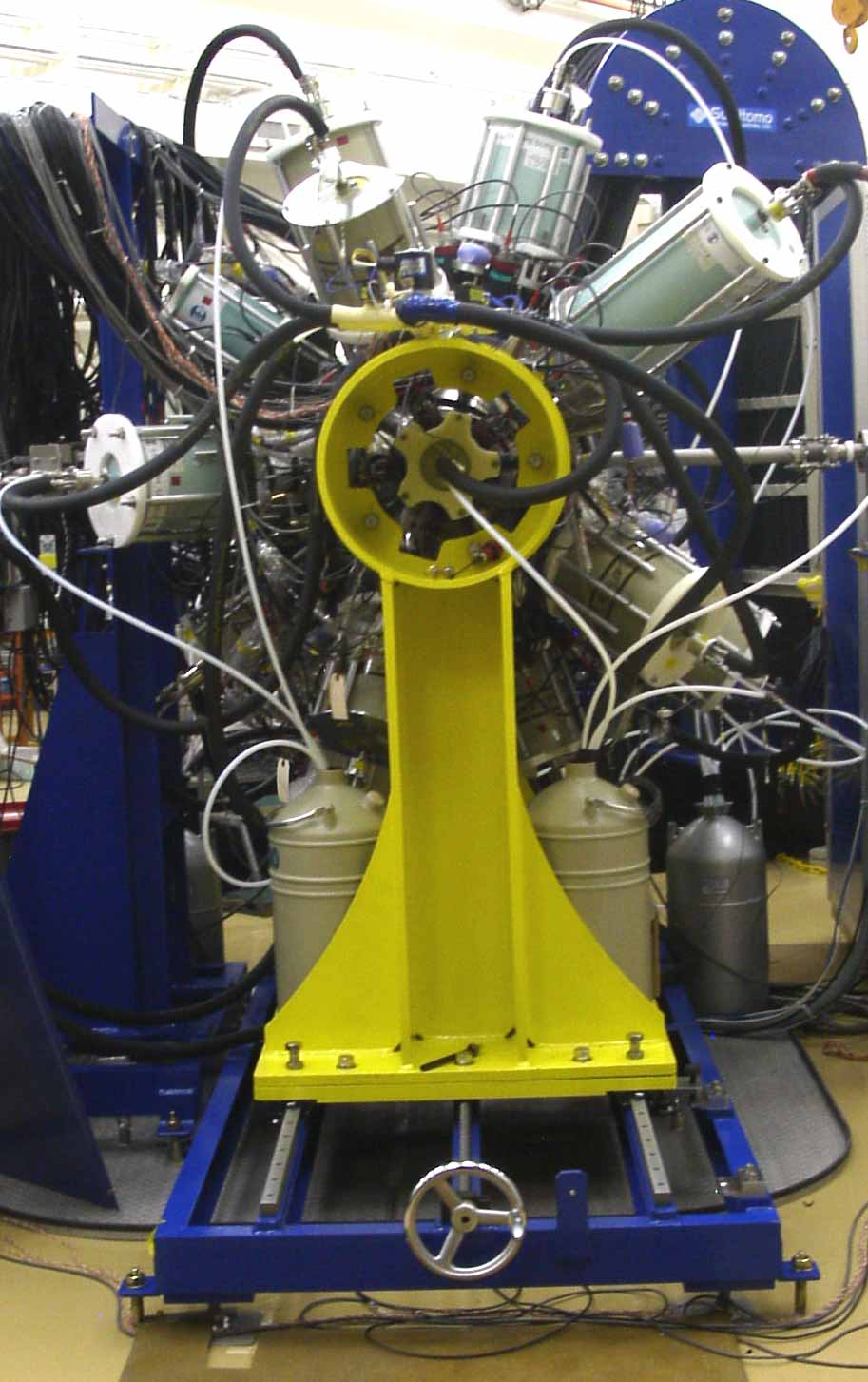
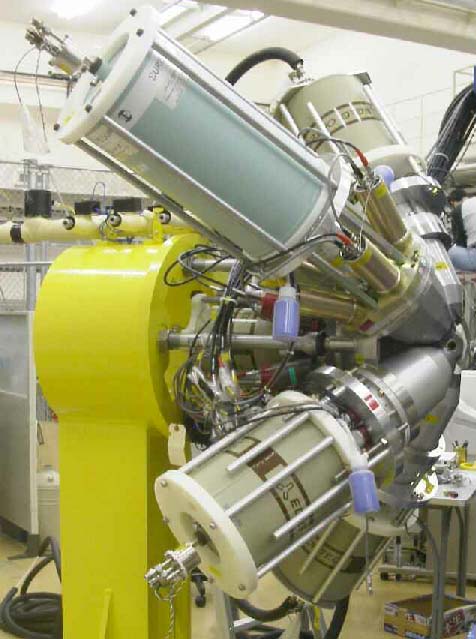
Multiple Gamma-ray Detector Array,"GEMINI"
Position-Sensitive Particle Detector, LUNA
We developed a position sensitive particle detector array that consists of position-sensitive photomultiplier tubes coverd with sheets of plastic scintilator. The advantages of the detactor are as follows: (1) applicable for high event rate (up to 105 cps), (2) good positional resolution: 0.5 - 1.0 mm, (3) high resistance to radiation damage, (4) compact (compared to gas counters), (5) easy to handle.Cluseter Computer System, HELIOS
[] A Cluseter Computer System consisting of 70 PC/AT computers, which is used for data analys of experiments and theoritical calculation. (since 2001)
